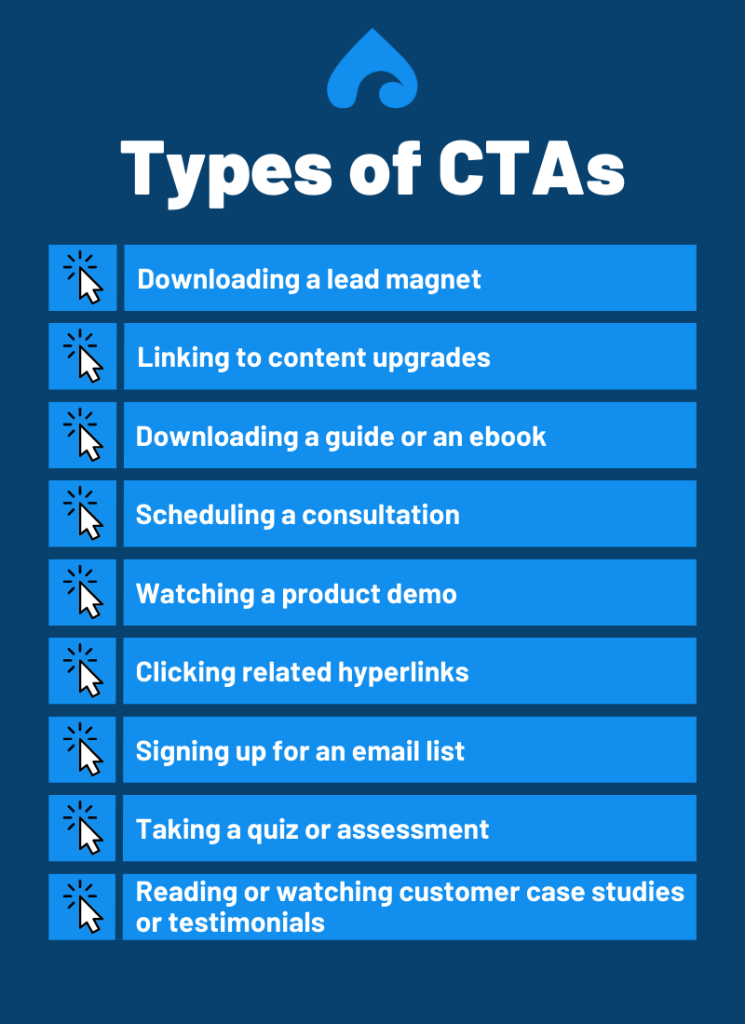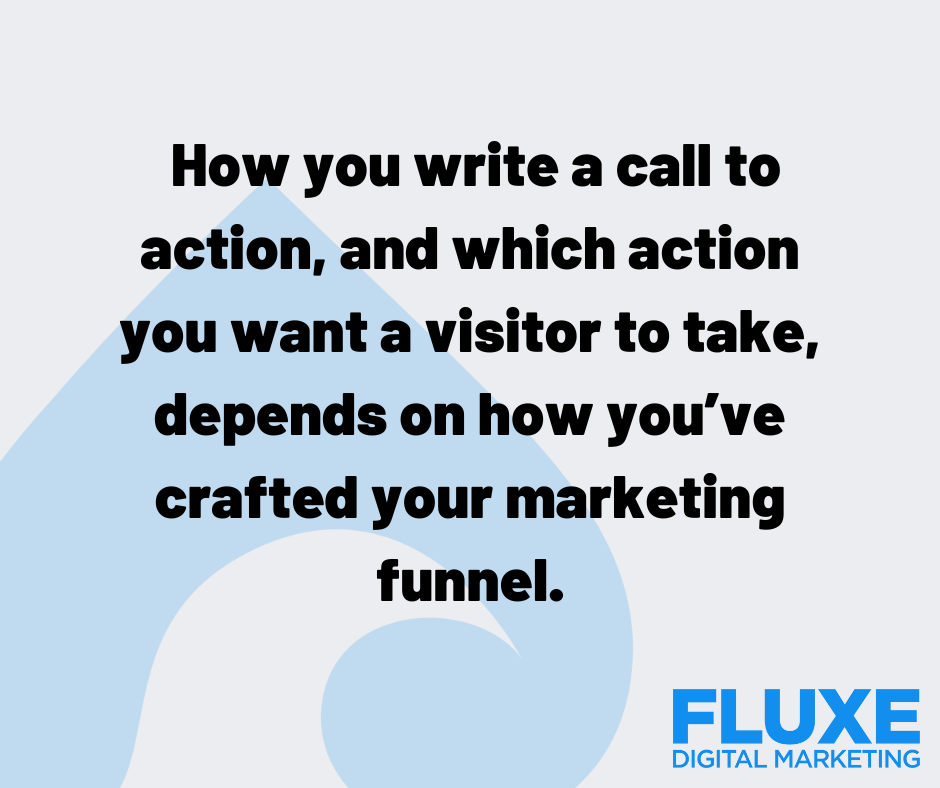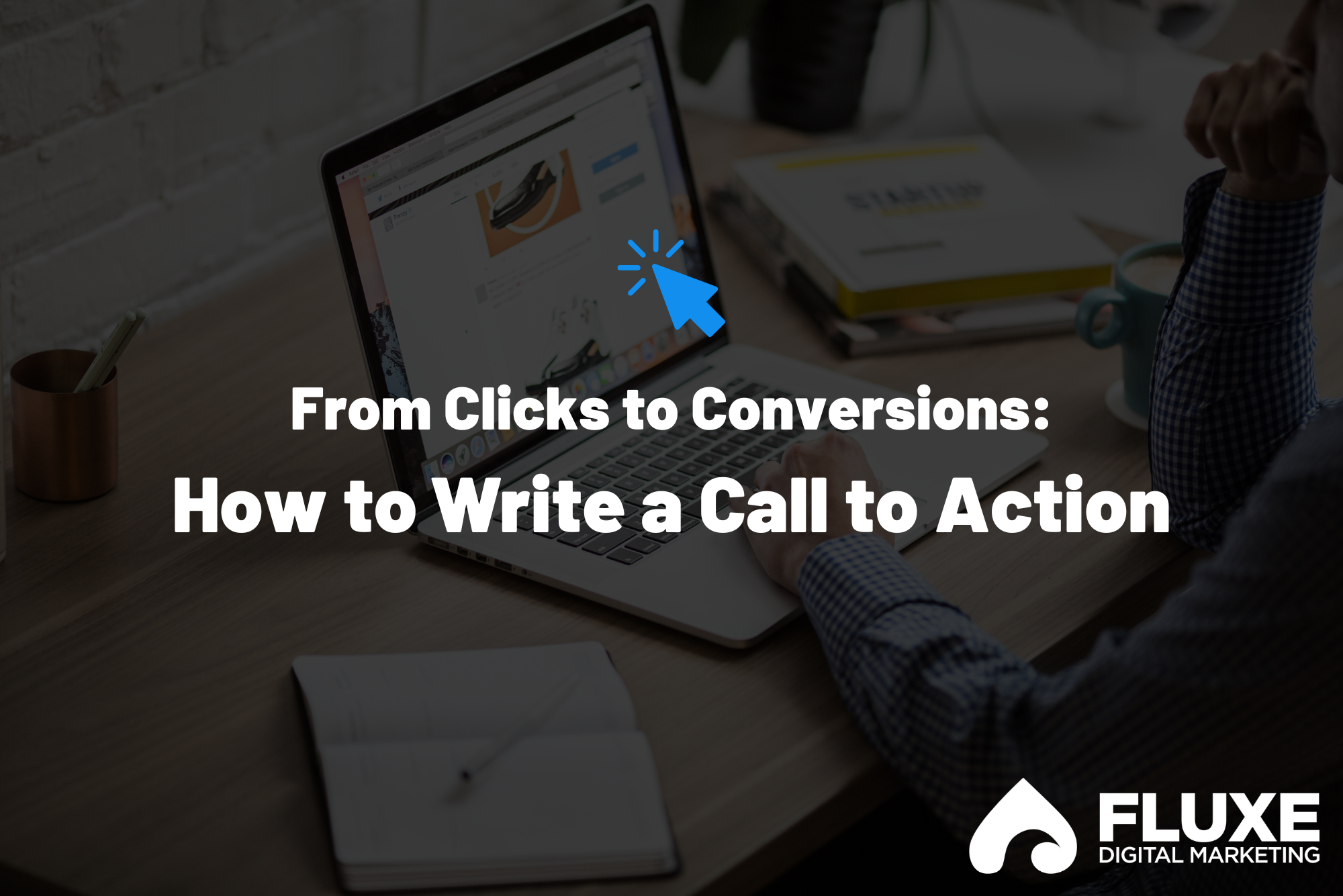Remember the last time you went down a rabbit hole?
Not a literal rabbit hole, Alice — a rabbit hole on a website. You jumped on, unsure what to expect, and 20 minutes later you had eight tabs open and were so immersed you couldn’t remember what day of the week it was.
Chances are, it wasn’t by accident. That rabbit hole was carefully engineered by someone anticipating your needs and leading you in a specific direction.
As a business owner, keeping visitors on your website as long as possible is advantageous. The more pages visitors read, the more they position you as a credible expert in your field, and it’s only a matter of time before they move down your sales funnel.
But how do you dangle that carrot effectively? If you want to learn how to write a call to action that draws visitors in and doesn’t let them go, keep scrolling.
Never Forget a Call to Action
Never leave the next step you want website visitors to take up to chance.
Let’s say the perfect prospect finds your site through a Google search and reads a single blog post. What is it you want that visitor to do next? Visit another page? Download an ebook? Sign up for your newsletter?
If you don’t explicitly guide them to that next step, chances are they’ll return to Google and start searching for your competitors.
So, on every page (yes, every page) invite your visitors to take the next step, and make it abundantly obvious what that next step is. Not to equate humans to sheep, but sometimes, we need to be herded. Playing the role of shepherd will keep visitors on your website as long as it takes for them to see you as someone worth buying from.
The question becomes how to write a call to action — the right kind of call to action — that’s obvious without being condescending, and effective without being overwhelming.

Types of Calls to Action
How you write a call to action, and which action you want a visitor to take, depends on how you’ve crafted your marketing funnel.
You’re probably already familiar with calls to action that ask visitors to “call us” or “complete a form.” These are fine, and history demonstrates their effectiveness, but they don’t fit every scenario. Fortunately, there are lots of others to choose from.
If you want to write calls to action that are appropriate for every aspect of your marketing strategy, consider these additional types:
- Downloading a lead magnet. A lead magnet is a freebie, like an ebook or coupon, offered to visitors in exchange for their email address. The offers can come via a sidebar banner or sitewide pop-up overlay.
- Linking to content upgrades. Unlike lead magnets, which can be used on any page, a content upgrade is bonus content directly related to a specific page on your website. It’s high-value content, like a video series, an email series, etc., that takes prospects to the next logical step.
- Downloading a guide or an ebook
- Scheduling a consultation
- Watching a product demo
- Clicking related hyperlinks. Throughout your text, link to related or relevant posts that explain concepts you’re discussing, like so.
- Signing up for an email list
- Taking a quiz or assessment
- Reading or watching customer case studies or testimonials. This is a great next step for a service page: “Don’t take OUR word for it!” etc.

How to Decide on Page-Appropriate Calls to Action
We’ve already established that every page needs a next step, but how do you know which next step is best for your visitor to take?
If you want to know how to write a call to action that’s relevant, consider the following:
- Page purpose. Identify the primary goal of each page on your website. Does it inform, educate, or persuade? Choose a CTA that aligns with the purpose of the page and guides visitors toward the desired action.
- Stage of awareness. Each of your prospects is at a different place in the customer journey. The most effective way to move them through that journey is to tailor your calls to action to meet them where they are.
- Content relevance. Ensure your CTA is relevant to the content on the page (e.g. if the page discusses a specific service, offer a free consultation or downloadable resource related to that service). The higher the relevance of your call to action, the higher your click-through rates will be. A link is a promise (e.g. “Learn more about this here!”), and breaking that promise will kill your credibility.
- Simplicity. Avoid overwhelming your visitors with too many CTAs on a single page. Focus on one primary CTA, with secondary CTAs if necessary, to guide users toward a specific action.
To ensure the highest success, continuously test different CTAs and analyze the results. Monitor click-through rates, conversions, and other key performance indicators to determine which CTAs are most effective and adjust accordingly. Tweak, improve, rinse, repeat.
How to Write a Call to Action
Now that you know what types of CTAs are available in your toolbox and how to choose which one is most appropriate for each page, how do you actually write the call to action?
Here are some simple best practices for getting started:
- Change your mindset. Start thinking of your website the same way you think of your sales SOP. It’s a dance you need to do with your prospects — giving them what they want while getting what you need.
- Integrate with your marketing strategy. Ensure your CTAs align with your broader marketing goals and objectives. Your CTAs should complement and support your email marketing, social media, and other efforts, to create a cohesive customer journey.
- Choose the right software that will take care of this for you. We use the software Thrive Leads to host, integrate with our EMS, and provide ways to create opt-ins. The software you choose should:
- Integrate with your email marketing software.
- Monitor your CTA performance using analytics tools to measure click-through rates, conversions, and other key metrics.
- Regularly test different CTA variations, such as text, design, and placement, to determine which version performs best.
- Easily and automatically add CTAs to different pages of your site. It’s not realistic to design a new CTA for every individual blog post, but perhaps your three to five blog categories each have one obvious next step.
- Optimize for mobile. With an increasing number of users browsing on smartphones and tablets, it’s crucial to provide a seamless experience across all devices.
- Place your CTAs strategically. Place CTAs where they’re most likely to be noticed and clicked. This may include above the fold, within the content, or at the end of blog posts or articles. Test different placements to determine what works best for your audience.
- Use actionable language. Use strong verbs and action-oriented phrases to encourage users to take the desired action: “Download Now,” “Schedule a Consultation,” “Get Started,” etc.
How to Write a Call to Action: Final Thoughts
If wondering how to write a call to action overwhelms you, you’re overthinking it.
Put yourself in your prospect’s shoes. What is the most logical step for them to take so they stay inside your ecosystem for their research and aren’t tempted to open a new tab and turn to your competitors?
If you don’t offer the next step, they’ll look somewhere else. If they don’t assume you have an answer to their problem, they’ll find someone who does.
Your goal is to keep visitors on your website as long as it takes for them to move to the next step of your marketing funnel. That can take time and, sometimes, many, many clicks!
So, go ahead. Start digging a rabbit hole for your prospects to explore!



